Visa 2008 Annual Report Download - page 7
Download and view the complete annual report
Please find page 7 of the 2008 Visa annual report below. You can navigate through the pages in the report by either clicking on the pages listed below, or by using the keyword search tool below to find specific information within the annual report.-
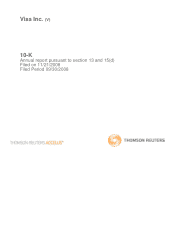 1
1 -
 2
2 -
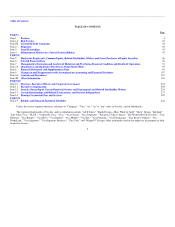 3
3 -
 4
4 -
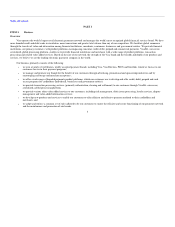 5
5 -
 6
6 -
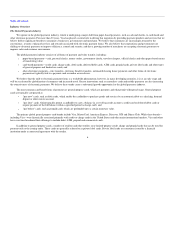 7
7 -
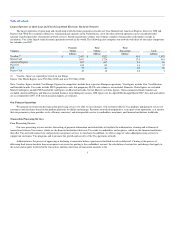 8
8 -
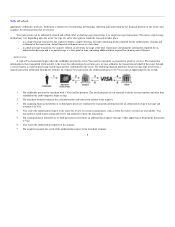 9
9 -
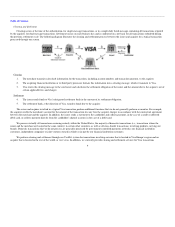 10
10 -
 11
11 -
 12
12 -
 13
13 -
 14
14 -
 15
15 -
 16
16 -
 17
17 -
 18
18 -
 19
19 -
 20
20 -
 21
21 -
 22
22 -
 23
23 -
 24
24 -
 25
25 -
 26
26 -
 27
27 -
 28
28 -
 29
29 -
 30
30 -
 31
31 -
 32
32 -
 33
33 -
 34
34 -
 35
35 -
 36
36 -
 37
37 -
 38
38 -
 39
39 -
 40
40 -
 41
41 -
 42
42 -
 43
43 -
 44
44 -
 45
45 -
 46
46 -
 47
47 -
 48
48 -
 49
49 -
 50
50 -
 51
51 -
 52
52 -
 53
53 -
 54
54 -
 55
55 -
 56
56 -
 57
57 -
 58
58 -
 59
59 -
 60
60 -
 61
61 -
 62
62 -
 63
63 -
 64
64 -
 65
65 -
 66
66 -
 67
67 -
 68
68 -
 69
69 -
 70
70 -
 71
71 -
 72
72 -
 73
73 -
 74
74 -
 75
75 -
 76
76 -
 77
77 -
 78
78 -
 79
79 -
 80
80 -
 81
81 -
 82
82 -
 83
83 -
 84
84 -
 85
85 -
 86
86 -
 87
87 -
 88
88 -
 89
89 -
 90
90 -
 91
91 -
 92
92 -
 93
93 -
 94
94 -
 95
95 -
 96
96 -
 97
97 -
 98
98 -
 99
99 -
 100
100 -
 101
101 -
 102
102 -
 103
103 -
 104
104 -
 105
105 -
 106
106 -
 107
107 -
 108
108 -
 109
109 -
 110
110 -
 111
111 -
 112
112 -
 113
113 -
 114
114 -
 115
115 -
 116
116 -
 117
117 -
 118
118 -
 119
119 -
 120
120 -
 121
121 -
 122
122 -
 123
123 -
 124
124 -
 125
125 -
 126
126 -
 127
127 -
 128
128 -
 129
129 -
 130
130 -
 131
131 -
 132
132 -
 133
133 -
 134
134 -
 135
135 -
 136
136 -
 137
137 -
 138
138 -
 139
139 -
 140
140 -
 141
141 -
 142
142 -
 143
143 -
 144
144 -
 145
145 -
 146
146 -
 147
147 -
 148
148 -
 149
149 -
 150
150 -
 151
151 -
 152
152 -
 153
153 -
 154
154 -
 155
155 -
 156
156 -
 157
157 -
 158
158 -
 159
159 -
 160
160 -
 161
161 -
 162
162 -
 163
163 -
 164
164 -
 165
165 -
 166
166 -
 167
167 -
 168
168 -
 169
169 -
 170
170 -
 171
171 -
 172
172 -
 173
173 -
 174
174 -
 175
175 -
 176
176 -
 177
177 -
 178
178 -
 179
179 -
 180
180 -
 181
181 -
 182
182 -
 183
183 -
 184
184 -
 185
185 -
 186
186 -
 187
187 -
 188
188 -
 189
189 -
 190
190 -
 191
191 -
 192
192 -
 193
193 -
 194
194 -
 195
195 -
 196
196 -
 197
197 -
 198
198 -
 199
199 -
 200
200 -
 201
201 -
 202
202 -
 203
203 -
 204
204 -
 205
205 -
 206
206 -
 207
207 -
 208
208 -
 209
209 -
 210
210 -
 211
211 -
 212
212 -
 213
213 -
 214
214 -
 215
215 -
 216
216 -
 217
217 -
 218
218 -
 219
219 -
 220
220 -
 221
221 -
 222
222 -
 223
223 -
 224
224 -
 225
225 -
 226
226 -
 227
227 -
 228
228 -
 229
229 -
 230
230 -
 231
231 -
 232
232 -
 233
233 -
 234
234 -
 235
235 -
 236
236 -
 237
237 -
 238
238 -
 239
239 -
 240
240 -
 241
241 -
 242
242 -
 243
243 -
 244
244 -
 245
245 -
 246
246 -
 247
247 -
 248
248 -
 249
249 -
 250
250 -
 251
251 -
 252
252 -
 253
253 -
 254
254 -
 255
255 -
 256
256 -
 257
257 -
 258
258 -
 259
259 -
 260
260 -
 261
261 -
 262
262 -
 263
263 -
 264
264 -
 265
265 -
 266
266 -
 267
267 -
 268
268 -
 269
269 -
 270
270 -
 271
271 -
 272
272 -
 273
273 -
 274
274 -
 275
275 -
 276
276 -
 277
277 -
 278
278 -
 279
279 -
 280
280 -
 281
281 -
 282
282 -
 283
283 -
 284
284 -
 285
285 -
 286
286 -
 287
287 -
 288
288 -
 289
289 -
 290
290 -
 291
291 -
 292
292 -
 293
293 -
 294
294 -
 295
295 -
 296
296 -
 297
297 -
 298
298 -
 299
299 -
 300
300 -
 301
301 -
 302
302 -
 303
303 -
 304
304 -
 305
305 -
 306
306 -
 307
307 -
 308
308 -
 309
309 -
 310
310 -
 311
311 -
 312
312 -
 313
313 -
 314
314 -
 315
315 -
 316
316 -
 317
317 -
 318
318 -
 319
319 -
 320
320 -
 321
321 -
 322
322 -
 323
323 -
 324
324 -
 325
325 -
 326
326 -
 327
327 -
 328
328 -
 329
329 -
 330
330 -
 331
331 -
 332
332 -
 333
333 -
 334
334 -
 335
335 -
 336
336 -
 337
337 -
 338
338
 |
 |

Table of Contents
Industry Overview
The Global Payments Industry
We operate in the global payments industry, which is undergoing a major shift from paper-based payments, such as cash and checks, to card-based and
other electronic payments. For more than 30 years, Visa has played a central role in driving this migration by providing payment products and services that we
believe deliver significant benefits to consumers, businesses, governments and merchants. We believe that consumers are increasingly attracted to the
convenience, security, enhanced services and rewards associated with electronic payment forms. We also believe that corporations and governments are
shifting to electronic payments to improve efficiency, control and security, and that a growing number of merchants are accepting electronic payments to
improve sales and customer convenience.
The global payments industry consists of all forms of payment and value transfer, including:
• paper-based payments—cash, personal checks, money orders, government checks, travelers cheques, official checks and other paper-based means
of transferring value;
• card-based payments—credit cards, charge cards, debit cards, deferred debit cards, ATM cards, prepaid cards, private label cards and other types
of general-purpose and limited-use cards; and
• other electronic payments—wire transfers, electronic benefits transfers, automated clearing house payments and other forms of electronic
payment not typically tied to a payment card or similar access device.
We believe that the shift to electronic payment forms is a worldwide phenomenon; however, in many developing countries, it is at an early stage and
will be accelerated by globalization of commerce and increased travel. Recent innovations such as contactless cards and mobile payments are also increasing
the attractiveness of electronic payments. We believe these trends create a substantial growth opportunity for the global payments industry.
The most common card-based forms of payment are general-purpose cards, which are payment cards that permit widespread usage. General purpose
cards are typically categorized as:
• "pay now" cards, such as debit cards, which enable the cardholder to purchase goods and services by an automatic debit to a checking, demand
deposit or other current account;
• "pay later" cards, which typically permit a cardholder to carry a balance in a revolving credit account (a credit card or deferred debit card) or
require payment of the full balance within a specified period (a charge card); and
• "pay before" cards, such as prepaid cards, which are prefunded up to a certain monetary value.
The primary global general purpose card brands include Visa, MasterCard, American Express, Discover, JCB and Diners Club. While these brands—
including Visa—were historically associated primarily with credit or charge cards in the United States and other major international markets, Visa and others
have over time broadened their offerings to include debit, ATM, prepaid and commercial cards.
In addition to general purpose cards, a number of retailers and other entities issue limited-purpose credit, charge and prepaid cards that can be used for
payment only at the issuing entity. These cards are generally referred to as private label cards. Private label cards are sometimes issued by a financial
institution under a contractual agreement with the retailer.
6
